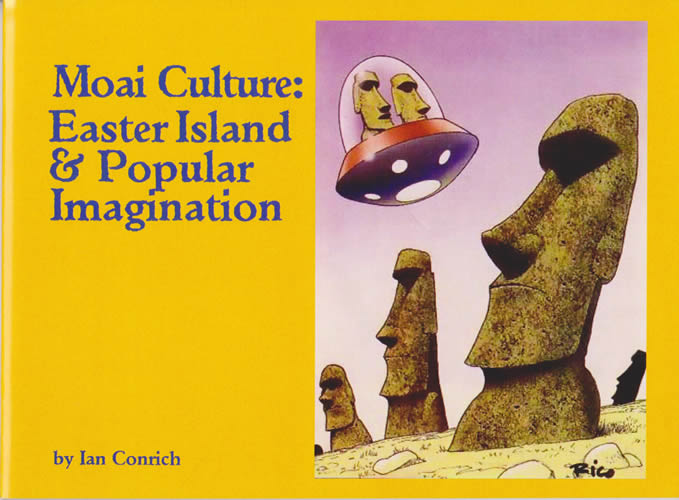A website that continues the work of the international exhibition
Easter Island, Myths and Popular Culture
The appeal of Easter Island has been most visible though the work of archaeologists, anthropologists and scientists, and the continuous flow of visiting tourists. How the stone figures (called moai) were created, constructed, and seen have been the subject of research that has repeatedly approached the stone figures within the island landscape. Yet, the moai have long held a popular appeal that has extended far into the culture of foreign territories, which have been drawn to fantasies of a detached and distant civilisation.
The website Moai Culture has been established to help the exhibition, Easter Island, Myths and Popular Culture, in exploring the multitude of ways in which Easter Island has been popularised in fiction, and in material and visual culture. It provides educational support for schools and researchers wishing to gain a view on Easter Island through an understanding of the power and the extent of the myths that, in particular, circulate around the moai.
Also of importance is the way in which, beyond the island, the undeciphered rongorongo tablets, Makemake, moai kavakava, and tangata manu, the birdman cult, have been popularised.
The site features, news, reviews, views, interviews, and an online archive for the exhibitions.

Some of this work appears in the catalogue Moai Culture: Easter Island and Popular Imagination, which was produced to accompany the exhibition at the Casula Powerhouse Arts Centre, Sydney, Australia.
New book by anthropologist and historian Hermann Mückler. A reprinting and reconsideration of the full text of Walter Knoche's 1925 study of Easter Island. In addition, this book examines the life of Knoche and places his wider work in its historical context.
Copies can be purchased from
